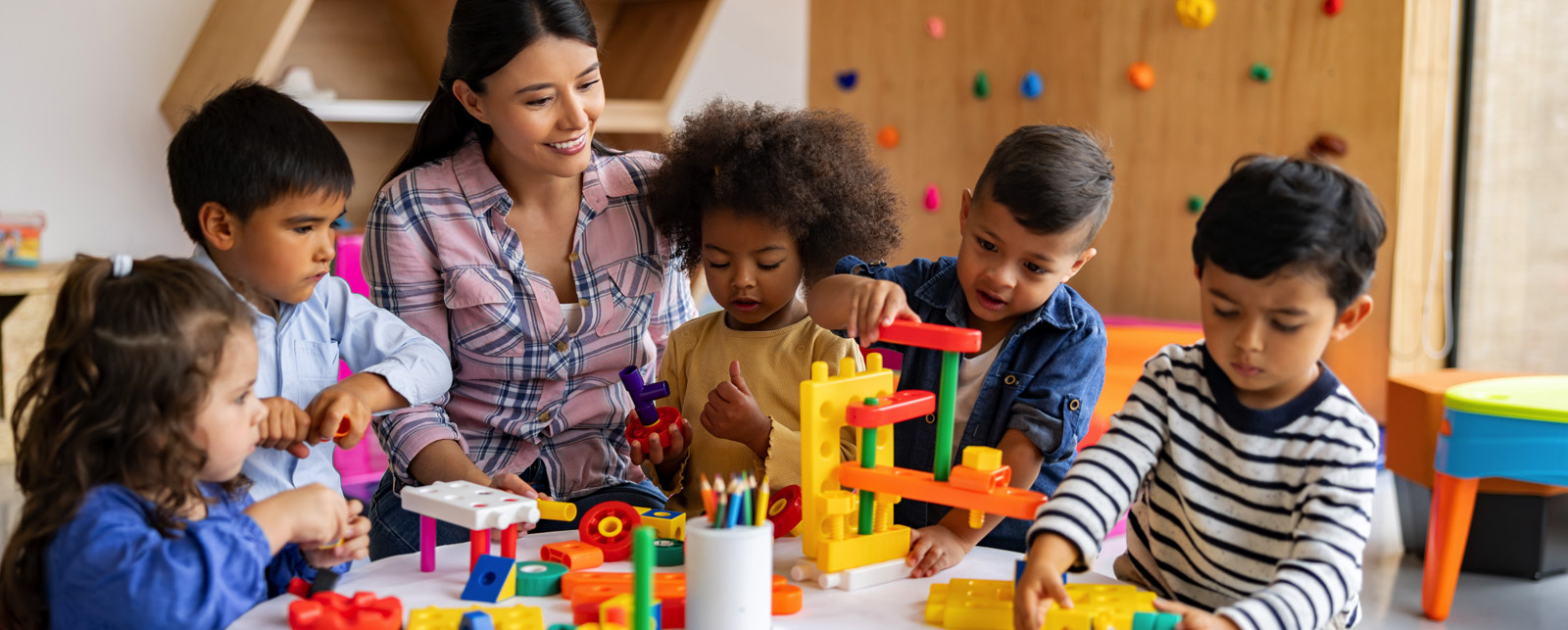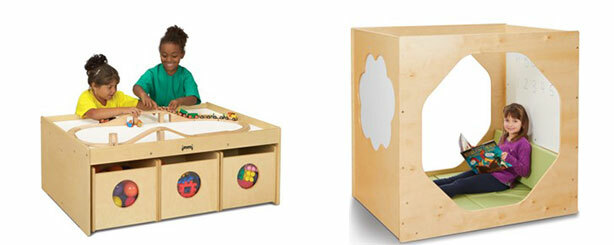Early Childhood

Start Young and Strong
A deeper look at early childhood education creates a new framework for classroom design.
Learners for Life
Studies indicate that 90% of human brain growth happens before the age of five. That’s when children are actively learning every minute of every day in every environment. It’s also where they develop crucial skills and behaviors. Self-confidence, empathy, social skills, the ability to self-regulate, critical thinking, application of concepts to the real world, kindergarten readiness and a life-long love for learning - and these all can be nurtured with focused attention and engagement.
Recognizing the importance of this developmental phase for all children, the 2021-22 California state education budget significantly expanded childcare and added the universal transitional kindergarten (TK) requirement for 4-year-olds to be in place by 2026. Over $100 billion dollars - the highest amount in state history – has been allocated to major investments in preschool, special education, and community schools. Half that budget is dedicated to support the building and renovating of facilities for Pre-K, TK, and Kindergarten. These developments mean that the skills and experience of knowledgeable learning environment designers and planners have never been more in demand.
The Classroom as an Ecosystem
Understanding how important these learning environments are to children and their development, our team of specialists began to think about classrooms as an ecosystem – starting with some important questions. What environments are conducive to learning at this age? What kind of spaces should be designed and created? And how do we design “opportunities for open-ended play both in the classroom and outdoors?” We found that researchers agree any environment for early learners should be child-centered and playful. Will our environments nurture the “whole child”, supporting not only their mental development but their emotional and social development as well?
From this exploration, our team developed a framework for the classroom as an ecosystem that balances active and quiet spaces designed to support UDL, Maslow’s Hierarchy, and the various activities and social interactions that occur in any classroom. The areas of the ecosystem are:
By combining these different areas, every classroom can adapt to the entire learning experience. Here’s an example of a floorplan that utilizes the ecosystem design.

An Environment for Every Student
An effective early childhood learning environment should consider multiple design drivers and considerations. Here are a few we evaluate.
Nature and Biophilia
Introducing nature and the connection to outdoors is a well-documented early childhood design strategy. Biophilia is correlated with improved academic achievement and reduced stress and anxiety. “Adding greenery to interior learning spaces can lead to improved performance in spelling, mathematics and science by 10-14%” (Daly, Burchett & Torpy, 2010). “Plants result in 30-60% reductions in feelings of stress and anxiety” (University of Technology Sydney). But biophilia is not just about adding greenery to a space. The 14 Patterns of Biophilic Design documented by Terrapin Bright Green are evaluated for every environment.
Individualized Learning
Learning environments can support differentiated, individualized instruction by providing variability in each space. Three outcomes to consider when designing for individualized learning are:

Making Space for Teachers Too
Our framework supports teachers engaged in active and agile instruction with solutions that are flexible enough to support a variety of activities by:
According to EdSource, “Learning through play is the sweet spot for early education. Teachers must have the skills to be able to put natural childhood curiosity to good use.” In our recent ONEder Podcast with Jill Vialet, founder of Playworks, Jill agrees and takes a deeper dive into the value of play in early child development.
While building a new framework for looking at classrooms as holistic environments, we learned that teachers’ skills, children’s curiosity, and experienced learning environment design all need to come together to facilitate the type of teaching and learning that caters to different children and educators. It’s imperative, however, that this happens as children first begin to learn. The earlier, we start, the better the results.